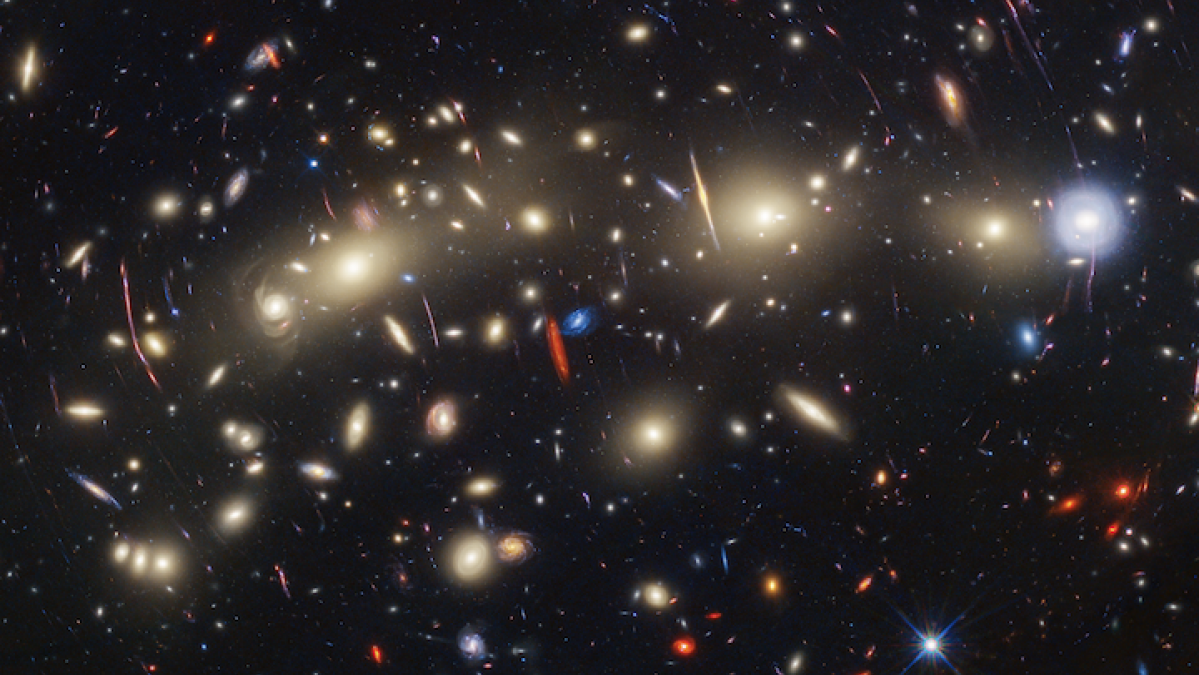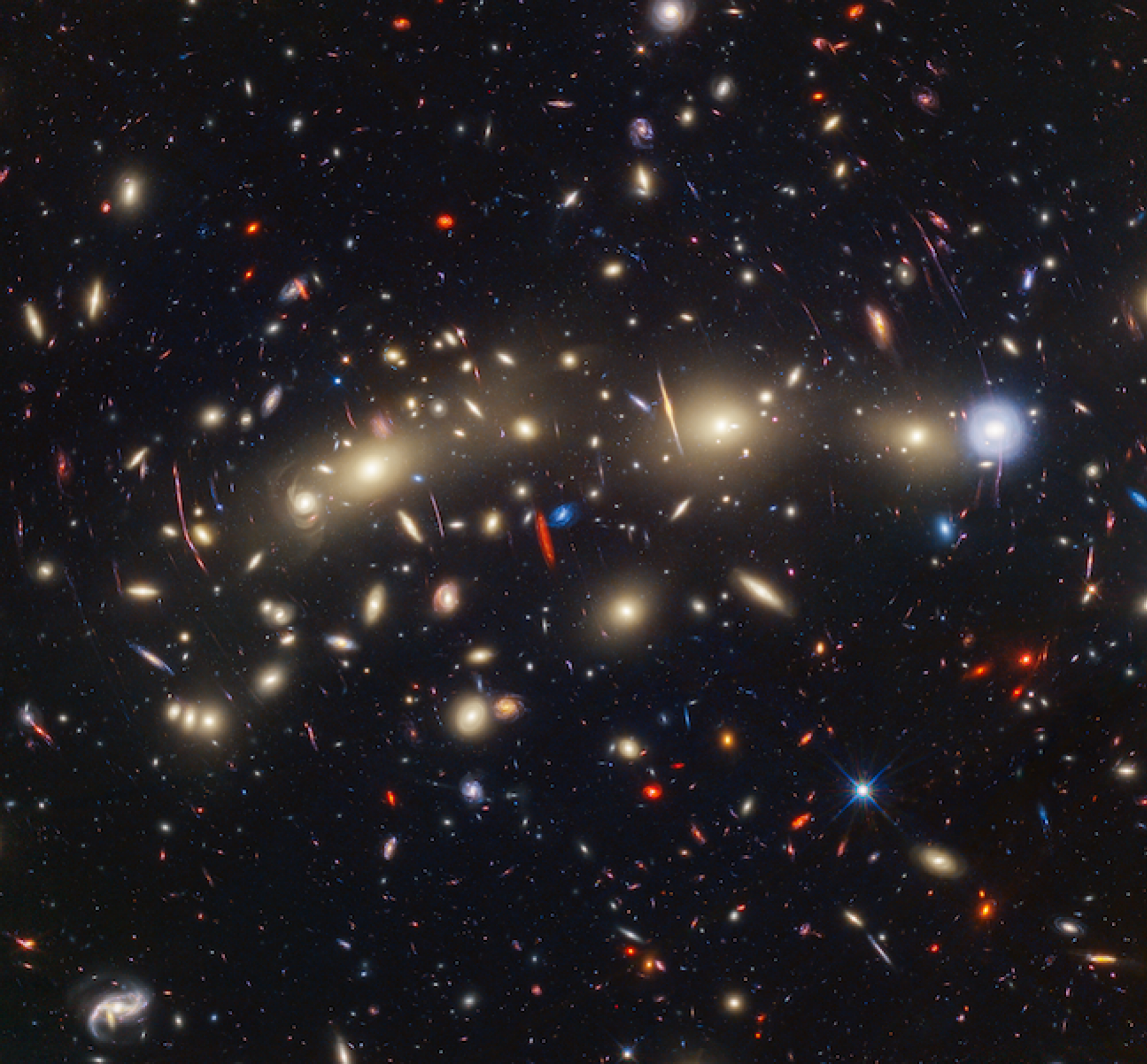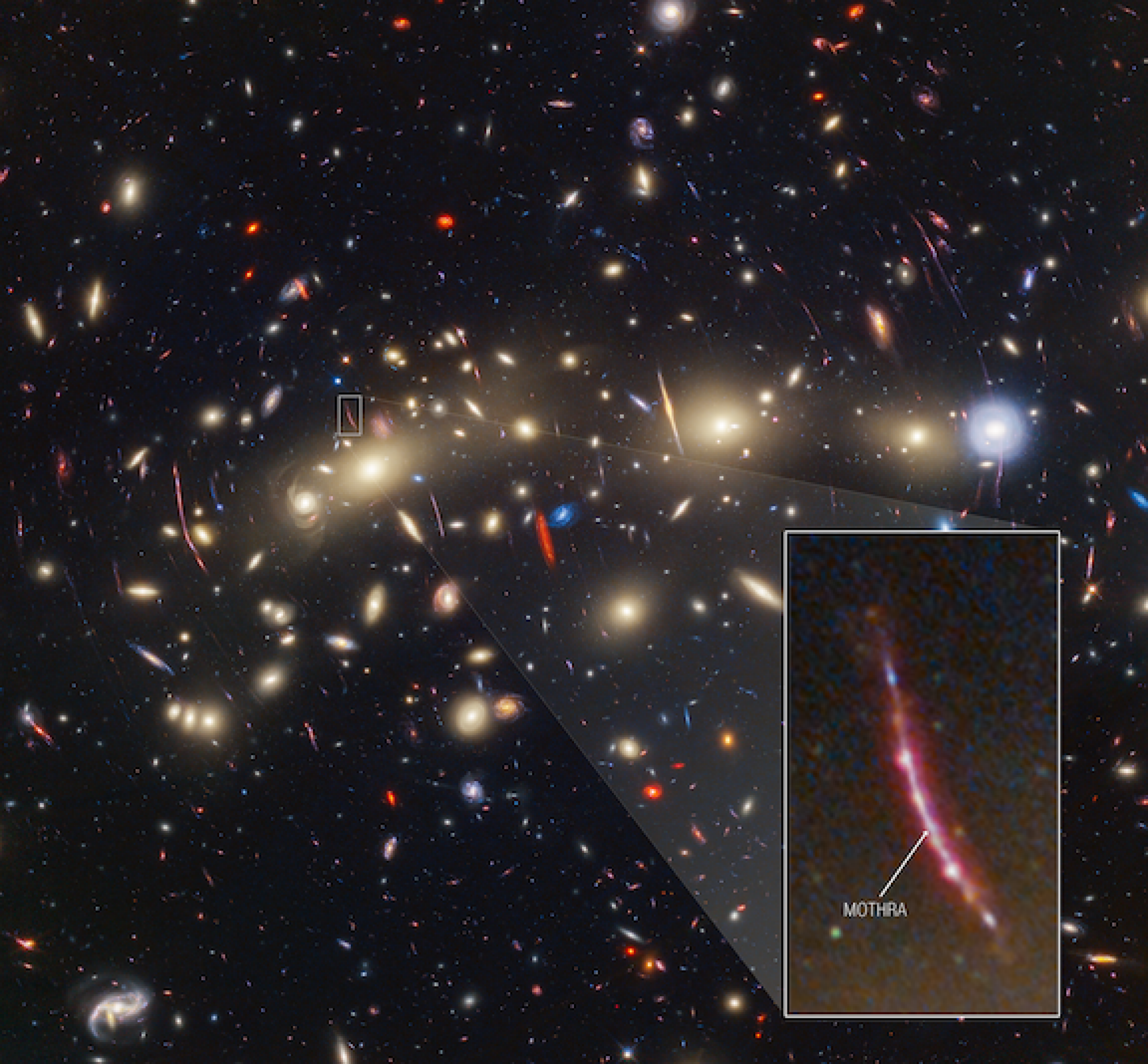Entertainment
NASA snapped a breathtaking view of deep space

Some cosmic objects are so massive, they can warp space and time, like a bowling ball sitting on a mattress.
NASA, along with other space agencies, just captured a striking image of a huge cluster of galaxies, called MACS0416. Galaxies can have hundreds of billions, or even trillions, of stars, each with their own planets — so this cluster is extraordinarily massive (it’s technically two galaxy clusters colliding). Scientists used both the James Webb Space Telescope and Hubble Space Telescope to capture MACS0416, and observe how its girth impacts our view of the cosmos.
“MACS0416 is a natural magnifying glass,” the space agency wrote online. “Its gravity is so strong that it warps time and space around it. Light follows that bend instead of traveling in a straight line, distorting and brightening (magnifying) distant objects behind this galaxy cluster.” (This effect is called “gravitational lensing,” and was predicted to exist by Albert Einstein’s General Theory of Relativity.)
The photo, a combination of the different types of light captured by Hubble (visible light wavelengths) and Webb (infrared light wavelengths), shows twisted, stretched, and warped objects around the center of the image. A primary goal in this astronomical effort — involving 22 hours of exposure time for Webb and 122 hours for Hubble — was to spot “transients.” These are objects, like galaxies, whose brightness changes over time as they’re highly magnified.
What you can view in the image below:
- You can see hundreds of galaxies: At the center of the image is the cluster of galaxies MACS0416, located some 4.3 billion light-years from Earth. But the background is dotted with farther-away galaxies, too. The bluest galaxies are relatively closer and this light reveals telltale signs of robust star formation. Meanwhile, the red galaxies are usually farther away, as this light has been stretched by the expanding universe into longer (and redder) light wavelengths.

At center is an expansive collection of galaxies in the giant galaxy cluster MACS0416.
Credit: NASA / ESA / CSA / STScI / J. Diego (Instituto de Física de Cantabria, Spain) / J. D’Silva (U. Western Australia) / A. Koekemoer (STScI) / J. Summers & R. Windhorst (ASU) / H. Yan (U. Missouri)
What’s more, the researchers zoomed in on “a monstrously bright star nicknamed ‘Mothra,'” located in an ancient galaxy behind the weighty cluster MACS0416. (This galaxy formed about 3 billion years after the Big Bang created the universe.) It’s an extremely distant point of light that has been magnified — by the giant natural lens in front — by some 4,000 times. That’s why it’s been profoundly stretched — from our perspective in the cosmos, anyhow. You can see the close-up view of Mothra below.
This intense magnification was likely boosted by a massive object in the big cluster that was too faint for the telescopes to see, like a “globular star cluster” which can contain thousands to millions of stars, the researchers explained. They recently published the study in the peer-reviewed science publication Astronomy & Astrophysics.
As you can see by the numerous stretched objects in view, this cosmic image captured many transients. “We can see transients everywhere,” Haojing Yan, an astronomer at the University of Missouri, who led another study on these transients, said in a statement.

A zoomed-in view of a gravitationally lensed galaxy.
Credit: NASA / ESA / CSA / STScI / J. Diego (Instituto de Física de Cantabria, Spain) / J. D’Silva (U. Western Australia) /A. Koekemoer (STScI) / J. Summers & R. Windhorst (ASU) / H. Yan (U. Missouri)
The Webb telescope’s powerful abilities
The Webb telescope — a scientific collaboration between NASA, the ESA, and the Canadian Space Agency — is designed to peer into the deepest cosmos and reveal new insights about the early universe. But it’s also peering at intriguing planets in our galaxy, along with the planets and moons in our solar system.
Want more science and tech news delivered straight to your inbox? Sign up for Mashable’s Light Speed newsletter today.
Here’s how Webb is achieving unparalleled feats, and likely will for decades:
- Giant mirror: Webb’s mirror, which captures light, is over 21 feet across. That’s over two and a half times larger than the Hubble Space Telescope’s mirror. Capturing more light allows Webb to see more distant, ancient objects. As described above, the telescope is peering at stars and galaxies that formed over 13 billion years ago, just a few hundred million years after the Big Bang.
“We’re going to see the very first stars and galaxies that ever formed,” Jean Creighton, an astronomer and the director of the Manfred Olson Planetarium at the University of Wisconsin–Milwaukee, told Mashable in 2021.
- Infrared view: Unlike Hubble, which largely views light that’s visible to us, Webb is primarily an infrared telescope, meaning it views light in the infrared spectrum. This allows us to see far more of the universe. Infrared has longer wavelengths than visible light, so the light waves more efficiently slip through cosmic clouds; the light doesn’t as often collide with and get scattered by these densely packed particles. Ultimately, Webb’s infrared eyesight can penetrate places Hubble can’t.
“It lifts the veil,” said Creighton.
- Peering into distant exoplanets: The Webb telescope carries specialized equipment called spectrographs that will revolutionize our understanding of these far-off worlds. The instruments can decipher what molecules (such as water, carbon dioxide, and methane) exist in the atmospheres of distant exoplanets — be they gas giants or smaller rocky worlds. Webb will look at exoplanets in the Milky Way galaxy. Who knows what we’ll find?
“We might learn things we never thought about,” Mercedes López-Morales, an exoplanet researcher and astrophysicist at the Center for Astrophysics-Harvard & Smithsonian, told Mashable in 2021.
Already, astronomers have successfully found intriguing chemical reactions on a planet 700 light-years away, and as described above, the observatory has started looking at one of the most anticipated places in the cosmos: the rocky, Earth-sized planets of the TRAPPIST solar system.
-

 Business5 days ago
Business5 days agoWeWork, once valued at $47 billion, files for bankruptcy
-

 Business3 days ago
Business3 days agoPrime members can now get a One Medical membership for $9/month
-

 Business4 days ago
Business4 days agoNintendo confirms live-action Zelda movie is in the works
-

 Business3 days ago
Business3 days agoBob Iger says Disney would like to stay in India amid Hotstar’s subscriber dip
-

 Business6 days ago
Business6 days agoIn Mamaearth, Peak XV finds its fourth 10x return since Sequoia separation
-

 Entertainment5 days ago
Entertainment5 days agoiPhone 15 Pro Max vs. Pixel 8 Pro camera comparison: the results shocked me
-

 Business2 days ago
Business2 days ago5 can’t-miss strategies to break through in a crowded market
-

 Business4 days ago
Business4 days agoThree go-to-market tactics every founder needs to thrive in today’s market

























